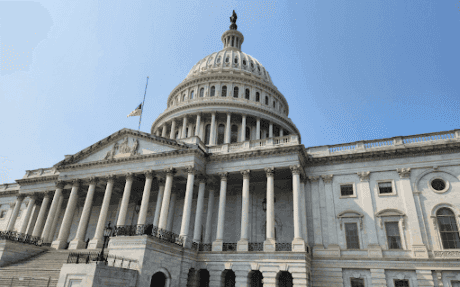The US government is talking about raising the roof… er, ceiling

Image: Lynne Terry/Oregon Capital Chronicle via AP
Treasury Secretary Janet Yellen recently sent a letter to party leaders in Congress, urging them to raise the federal government’s debt ceiling before the US officially reaches its borrowing cap later today. Bear with us as we explain this one – it’s complex but important, and impacts the global economy in a very real way.
☝️ First things first: The US government almost always spends more money in a given year than it takes in via taxes and other revenue. To cover this shortfall, known as the federal deficit, the government borrows money by selling Treasury bonds to investors around the world, who expect the US to pay them back with interest.
Together, these back payments make up America’s national debt, which currently sits at juuuust under $31.4 trillion. That figure also happens to be the maximum amount the US government is currently authorized to borrow by law, aka the federal debt ceiling.
- America’s debt ceiling can only be raised by an act of Congress. Doing so doesn’t incur any new government spending, but instead authorizes the Treasury to borrow more to pay for expenses Congress approves through a separate process.
📅 That brings us to the present-day… House Republicans, who took the majority in the chamber earlier this month, are insisting that any agreement on raising the debt limit also include federal spending cuts, a demand that Senate Democrats and the White House have rejected.
🏛️ So, what happens if the ceiling is reached?... If the US fails to pay interest payments to bondholders, then the federal government would be in default for the first time ever. This would lower America’s credit rating, increase the cost of the national debt, and potentially set off a global economic crisis.
- However, a possible government default is still months away. If Congress fails to reach a deal on the debt ceiling before today’s deadline, the Treasury can take “extraordinary measures” to manage cash flow under the $31.4 trillion limit – though Secretary Yellen said those measures would likely be exhausted by early June.
+Blast from the past: In 2011, Congress held a similar standoff over government spending and the debt limit. Despite lawmakers reaching a deal two days before a potential default, the situation caused a downgrade of the US credit rating, which led to a stock market crash.
Share this!
Recent U.S. stories

U.S.
| January 18, 2023More grad schools are ditching college rankings
🎓 Remember a few weeks ago, when we covered how Yale Law School leaving the US News & World Report’s annual rankings could lead to more schools denouncing the list? Well, now the exodus has spilled over to med school rankings, too

U.S.
| January 12, 2023NOT-AM, but PM seems to be okay, says the FAA
🚫✈️ Yesterday, the entire airline industry ground to a brief halt. The Federal Aviation Administration prohibited every single domestic flight in the US – and this isn’t an exaggeration – from lifting off between 7:20 am ET and 8:50 am ET.

U.S.
| January 10, 2023Seattle schools sue social media platforms
🤔 How is TikTok similar to pollution and illegal gambling?
You've made it this far...
Let's make our relationship official, no 💍 or elaborate proposal required. Learn and stay entertained, for free.👇
All of our news is 100% free and you can unsubscribe anytime; the quiz takes ~10 seconds to complete